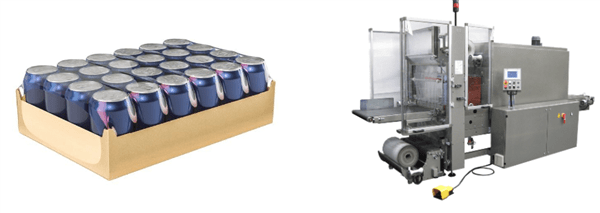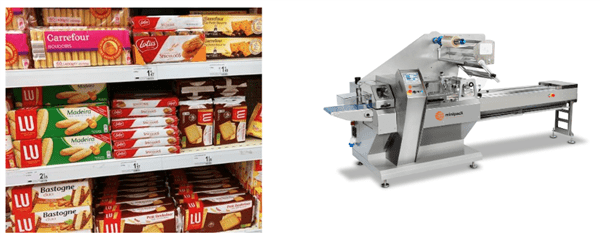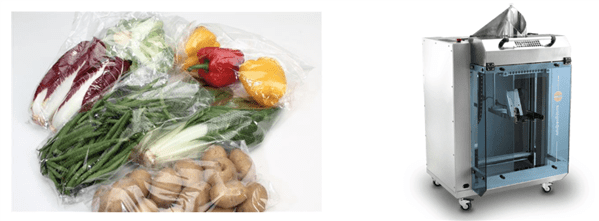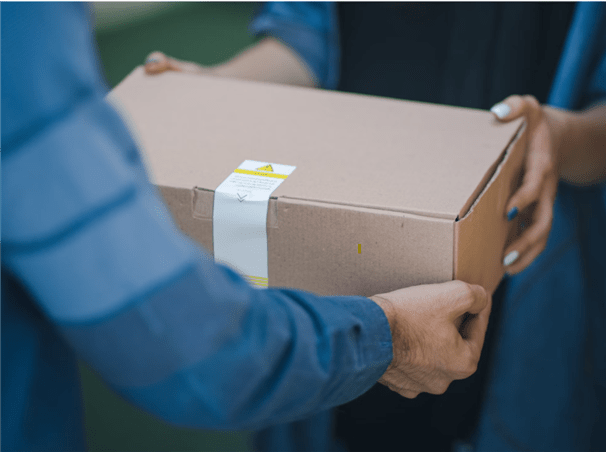In this article we will explore:
- What is secondary packaging
- The differences between primary packaging and secondary packaging
- The most common secondary packaging techniques
- Examples of secondary packaging: the pharmaceutical sector
- Importance of choosing the ideal machine
What is secondary packaging
Secondary packaging is the stage following primary packaging, involving the boxing or packaging of already packaged products. This step is critical to ensure the protection, integrity and optimal presentation of products during transport and distribution.
The differences between primary packaging and secondary packaging
The fundamental difference between primary and secondary packaging lies in their function and purpose.
Primary packaging involves the direct packaging of products, such as bottles, blister packs or bags.
On the other hand, secondary packaging is responsible for aggregating primary products into larger packaging, such as boxes or cartons, which provides protection and support during transportation and presentation to the final customer.
The most common secondary packaging techniques
Shrink bundling

Pictured: an example of shrink bundled products and the HS 70 AL automatic sleeve wrapper
Shrink bundling is a secondary packaging technique involving the use of plastic film to wrap and seal a group of products together. This technique is often used to pack multiple packages of products such as soft drinks, cans, or snack packs.
Flow pack

Pictured: an example of flow packs and the MINIFLOW 600 EVO packaging machine
Flow packing, also known as pillow packing, is a packaging technique in which a film seals the products inside by forming a cushion of air.
This method is widely used for the primary packaging of food products such as bread, cookies or snacks, but also for their secondary packaging (for example, multipacks).
Bagging

Pictured: an example of bagged products and the X-BAG EVO packaging machine
Bagging is a secondary packaging technique that involves placing a product or group of products inside a sealed plastic bag or sack.
This type of packaging is often used for items such as dried fruits, candies, or bulk products, or to make multipacks of pre-packaged single-serving products.
Shrink wrapping

Pictured: an example of shrink-wrapped products and the PRATIKA 56-T MPS packaging machine
Shrink wrapping is a primary or secondary packaging technique in which a plastic film is wrapped around products and then heated to shrink and conform perfectly to the shape of the products.
This method is ideal for products with irregular or complex shapes such as bottles, fruits, vegetables or electronic items.
Practical examples of secondary packaging: the pharmaceutical sector
In the pharmaceutical industry, secondary packaging plays a key role in the protection and safety of pharmaceutical products. In an environment where drug quality and integrity are priorities, secondary packaging ensures that products reach patients in optimal condition, preventing damage, contamination, and unwanted handling.
In recent years, the importance of secondary packaging in the pharmaceutical industry has grown significantly. This can be attributed to a number of reasons, including the increasing number of rules and regulations regarding the safety of pharmaceutical products, the need to ensure full traceability of products throughout the supply chain, and consumer demand for informative and user-friendly packaging.
For this reason, pharmaceutical companies are increasingly aware of the importance of investing in highly efficient and technologically advanced secondary packaging equipment. These machines must be able to handle a variety of product formats and sizes and ensure a reliable and compliant packaging process.
Some examples of secondary packaging techniques used in this area include:
- tablets packaged in blister packs;
- medicine bottles packaged in sealed boxes;
- syringes or vials packaged in shrink wrap.
The importance of choosing the ideal machine for secondary packaging
Choosing the right packaging machine is crucial to ensure the efficiency, quality and compliance of the packaging process. Various secondary packaging techniques require specialized machines that can handle specific materials and adapt to product requirements.
It is essential, therefore, to consult experts and seek advice to identify the ideal machine that will meet the secondary packaging needs of your products.
Don't miss the opportunity to improve the efficiency and quality of your packaged products. Our experts will be happy to provide you with detailed information and advice on how to optimize your secondary packaging process.


